Seongbuk-dong Jip (성북동집)
3.6Km 2021-03-29
4, Seongbuk-ro 24-gil, Seongbuk-gu, Seoul
+82-2-747-6234
This restaurant in Seongbuk-dong is famous for its Kalguksu (chopped noodle soup) and dumplings. This restaurant's signature menu is noodle soup. This Korean dishes restaurant is located in Seongbuk-gu, Seoul.
Monte Bugaksan (북악산)
3.6Km 2025-08-21
Cheongun-dong, Jongno-gu, Seúl
Seúl está rodeada de montañas, principalmente Bugaksan, Namsan, Naksan e Inwangsan. Bugaksan, la montaña situada al norte de Seúl, es la mayor de estas, y es un vástago del monte Bukhansan. También es conocida como Baekaksan.
La Fortaleza de Seúl recorre la sierra y la puerta Changuimun (también llamada Jahamun), una de las cuatro pequeñas puertas que rodeaban el castillo durante la época Joseon, se encuentra al oeste de la montaña, cerca de Inwangsan. La ruta Bugak Skyway, que une Changuimun y Arirang Hill en Jeongneung, tiene unas magníficas vistas del centro de Seúl, y pasa por diversas atracciones como Changuimun y el Pabellón Bukak. Otra atracción es el Parque Samcheong, al sur del monte Bugaksan.
Los montes Inwangsan (al oeste de Bugaksan) y Naksan (al este) tenían ubicaciones perfectas según la geomancia coreana pungsu (feng-shui). El monte Inwangsan estaba plagado de tigres durante los comienzos de la dinastía Joseon. De acuerdo con la leyenda, el rey suplicó a la deidad de la montaña que enviara los tigres al otro lado del río Yalu. Aunque los tigres se marcharon, se le permitió quedarse a una tigresa con cachorros, cuyas crías se multiplicaron convirtiendo Inwangsan en un lugar temible lleno de tigres.
Inwang Skyway conecta la parte este de Insangwan con Bugaksan. La ladera este de Inwangsan se ha convertido en una elegante zona residencial, mientras que Guksadang (que significa literalmente "Santuario Nacional") fue desplazado de Namsan a un área al oeste de la montaña en la década de 1920. Aún hoy, se celebran exorcismos chamanes en el santuario, así como rituales en honor de las deidades de la montaña.
Suyeonsanbang (수연산방)
3.7Km 2024-07-19
8, Seongbuk-ro 26-gil, Seongbuk-gu, Seoul
Suyeonsanbang, a traditional Korean tea house located in Seongbuk-dong, was originally the house where the late Korean author Lee Tae-Jun wrote many of his books. Now, his estate has opened Suyeonsanbang’s doors to the public in the form of a charming and peaceful tea house. Famous for its savory tea, beautiful nature, and rich history, Suyeonsanbang has been covered by a variety of foreign media outlets like NHK (Japan), BBC (UK), French TV channels, and numerous Japanese magazines. To take a break during the summer heat, visitors come to Suyeonsanbang to try their patbingsu (shaved ice with red beans), one of its summer specialties. So come relax and be inspired in this traditional Hanok tea house.
Jaha Sonmandu (자하손만두)
3.7Km 2021-03-29
12, Baekseokdong-gil, Jongno-gu, Seoul
+82-2-379-2648
Located in Buam-dong, Jaha Sonmandu is a restaurant specializing in Korean hand-made stuffed dumplings. Though the restaurant’s exterior is that of a classic restaurant, the succulent flavors of the food are reminiscent of grandma’s cooking — timeless and full of love.
Barrio de Buam-dong (부암동)
3.7Km 2021-05-04
Changuimun-ro 145, Jongno-gu, Seúl.
+82-2-2148-1807
El barrio de Buam-dong, situado en Jongno-gu, Seúl, tiene aspectos del pasado mezclados con el ambiente sofisticado de Samcheong-dong. En sus calles curvadas se encuentran museos, cafeterías y restaurantes modernos junto con molinos y peluquerías de los años 60 o 70 del siglo XX. Originalmente, era un lugar tranquilo con viviendas de pintores, escritores, profesores y otros artistas que vivían con sus pasos pausados; pero recientemente ha ganado la popularidad por ser lugar de rodaje de la telenovela "Cafetería el Príncipe Nº1" (se encuentra aquí la casa de Choi Han-seong) y se ha llenado de cafeterías y tiendas comerciales con diseños únicos. Es una de las tres zonas de moda junto con Samcheong-dong y la calle Garosu-gil de Sinsa-dong.
Golmok Naengmyeon (골목냉면)
3.8Km 2021-03-26
295-7, Dokseodang-ro, Seongdong-gu, Seoul
+82-2-2235-2540
This is a Seoul-style naengmyeon (Korean cold noodle) restaurant that opened in 1966. This restaurant's signature menu is cold buckwheat noodles. This Korean dishes restaurant is located in Seongdong-gu, Seoul.
Museo Whanki (환기미술관)
3.8Km 2021-05-21
Jahamun-ro 40-gil 63, Jongno-gu, Seúl
La Fundación Whanji inauguró el Museo Whanki en 1992 en honor al pintor Kim Whanki (1931-1974). El museo posee alrededor de 300 piezas de Kim Whanki, así como realizar diversas exhibiciones especiales sobre el arte contemporáneo y otros eventos, además de exposiciones permanentes de las obras de Kim Whanki. Con dichas actividades, el Museo Whanki se esfuerza por recordar el valor del pintor Kim y sus influencias, y desarrollar más el arte coreano.
Samcheonggak(삼청각)
3.8Km 2020-12-24
3 Daesagwan-ro Seongbuk-gu Seoul
+82-2-765-3700
You can enjoy Hanjeongsik (Korean table d’hote) in a beautiful natural environment. This Korean dishes restaurant is located in Seongbuk-gu, Seoul. The most famous menu is Korean table d'hote.
Eulmildae Pyeongyang Naengmyeon (을밀대평양냉면)
3.8Km 2021-03-26
24, Sungmun-gil, Mapo-gu, Seoul
+82-2-717-1922
It is a famous Pyongyang naengmyeon (Korean cold noodle) restaurant in Mapo where a lot of customers always wait in line. This restaurant's signature menu is Pyeongyang cold buckwheat noodles. This Korean dishes restaurant is located in Mapo-gu, Seoul.
Mercadillo Tradicional de Seúl (서울 풍물시장)
3.9Km 2024-01-24
Cheonho-daero 4-gil 21, Dongdaemun-gu, Seúl
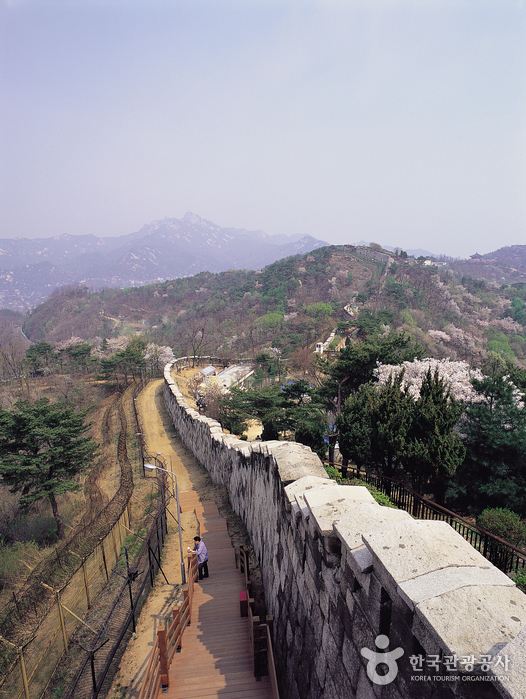

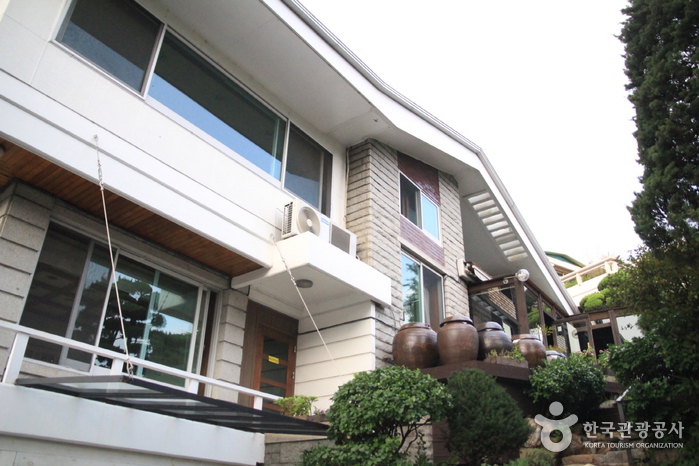
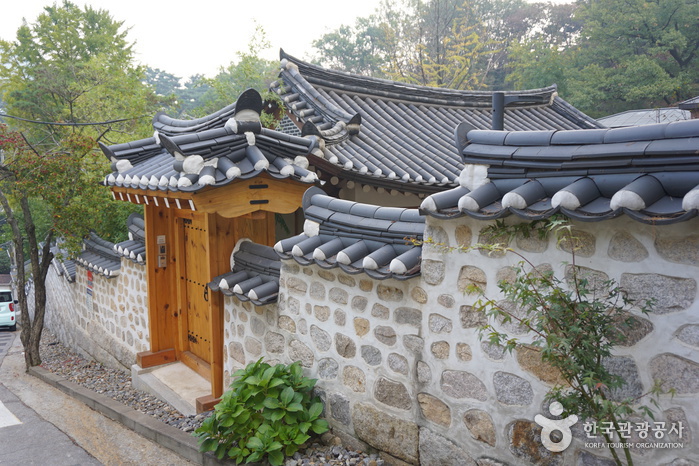

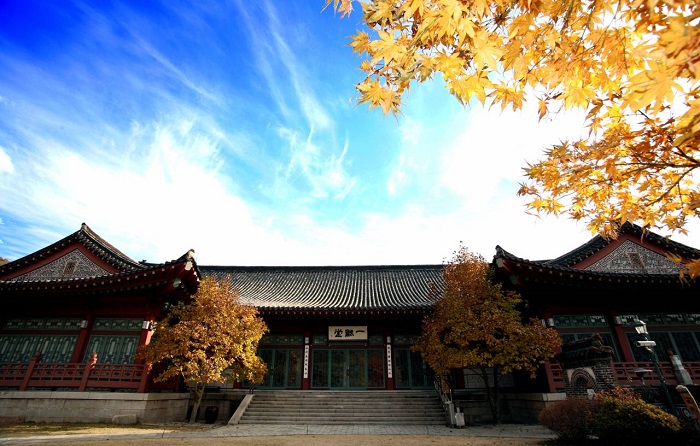
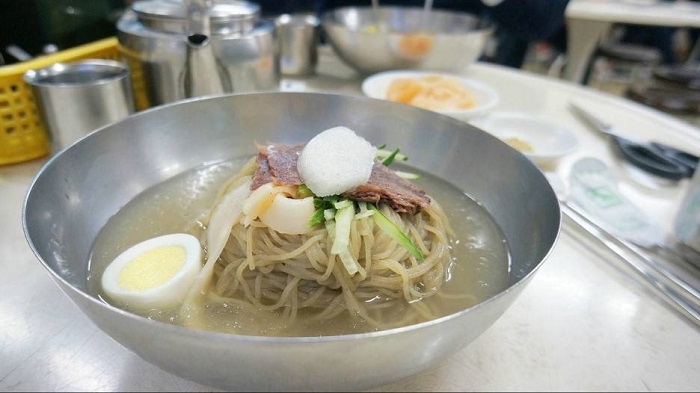
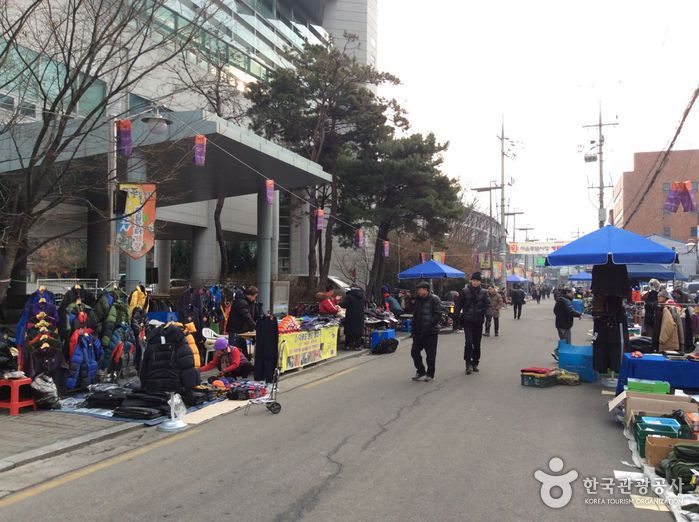
 Español
Español
 한국어
한국어 English
English 日本語
日本語 中文(简体)
中文(简体) Deutsch
Deutsch Français
Français Русский
Русский